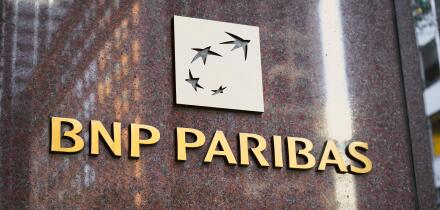Banks in Singapore, South Korea and Japan have become regular covered bond issuers and they are expected to maintain a consistent presence in the market. Among these three, Japanese issuers have the biggest potential for growth, given the country has one of the largest mortgage markets in the world but only two covered bond issuers. Several other Asian countries, most notably China, are monitoring developments and should emerge as sources of covered bonds.
Singapore is perhaps the most well-known Asian hub of covered bond issuers, reflecting the sovereign’s triple-A credit rating, a trusted legal framework based on English law, and its status an advanced financial centre with three, soon to be four, sophisticated issuers.
However, unlike for many European banks, the need for wholesale refinancing after the pandemic didn’t rise as much in Singapore, according to Colin Chen, co-head of financial institutions and structured products at DBS Bank.
DBS, United Overseas Bank and Oversea-Chinese Banking Corp (OCBC) have established programmes and have been active since 2015, with DBS and UOB issuing at least one euro benchmark a year.
Although all three issuers are well funded with deposits and do not require much market funding, Chen says “they do have a strategic need for liquidity”.
This trio have tended to be less prolific issuers than their European peers, which could be considered a sign of strength, says Patrick Seifert, head of primary markets and global syndicate at LBBW. “The question is, ‘will this change?’ and the short answer is: ‘yes’,” he says.
The drivers for change relate to the escalating cost of funding and the demise of Silicon Valley Bank, which highlighted growing concern at the quality of deposits, something that Seifert says global regulators “are taking a closer look into”.
Deposits used to be viewed as the cheapest, most available, funding source, but Chris Teck Hooi, head of group funding at DBS, says this has begun to change.
“If overlaid with potential outflows from a behavioural and regulatory standpoint,” says Hooi, then deposits may not necessarily be the cheapest source of funding. Most banks outside the US, he says, do not have the competitive advantage of being able to raise “sticky dollar deposits,” with the Federal Reserve acting as the lender of last resort.
Asian covered bond supply across currencies (€bn)
Source: Primary Market Monitor/Dealogic
Cause for optimism
For these reasons, Seifert is optimistic about volume growth in the Singaporean market and says there is the potential for three or four deals over the next six months, “possibly including [from] a new name,” although he concedes that this will entail some work.
Standard Chartered Bank in Singapore has been touted as a possible fourth Singaporean issuer.
But the established banks are also expected to become more frequent issuers. DBS doubled its covered bond programme size to $20bn earlier this year and built in capacity for its overseas branches to issue deals all guaranteed by the cover pool under the same programme, says Hooi.
DBS’s most recent AS$1.5bn ($960m) four year, launched in August, was its first overseas branch issuance, priced “on the cuff of obtaining regulatory clarity” from the Monetary Authority of Singapore, says Hooi. The Monetary Authority of Singapore was “very supportive,” of these structural changes to its programme, he says, and the Aussie dollar deal “marked another key milestone in the development of the Singaporean covered bond market”.
Alongside DBS, UOB has been active across a number of currencies, most notably euros, sterling and dollars. “We are mindful of the need to engage the markets regularly to ensure we continue to be in front of our global investors, says Chin Chin Koh, head of group central treasury at UOB.
The three to five year area of the curve is “the sweet spot for matching our assets,” she adds, but typically UOB sticks to the five year area, where it identifies “the critical mass of investor demand,” in normal times.
However, when European rates became negative, UOB had the flexibility to extend out to eight years, enabling it to lock in lower spreads for longer and fit investors’ desire for longer durations, which at that time offered higher spreads.
Singaporean banks are well known for offering some of the best prepared transactions of any issuers, says Marco da Silva, NordLB’s DCM head of origination for Asia Pacific.
He says Singaporean lenders typically begin the process weeks before they expect to issue, setting up one-on-one meetings with investors and roadshows to gain a thorough understanding of pricing in specific tenors.
Singaporean banks are among the “most sophisticated” in Asia, according to LBBW’s head of DCM origination for Asia Pacific, Linfei Han. He says issuers have a strong focus on maintaining a low cost of funding and the best way to achieve that is with covered bonds.
These banks typically compare the cost of funding to the dollar equivalent as they often swap proceeds back to dollars. Hooi says DBS does not always swap back to dollars, having previously kept euro issuance in euros, “but if the cost of dollar swap is compelling, we won’t rule out swapping back to dollars”.
UOB has always “kept a lookout across currency markets for opportunistic savings,” says Koh, though she emphasises that the bank’s issuance will still be in the core funding markets in which UOB regularly issues.
Euro covered bonds are widely seen as offering the deepest pool of liquidity and, from a pricing perspective, Singaporean deals achieve similar traction to Australian deals, which also are not eligible for repo with the European Central Bank.
Unlike Canada, Singapore and Australia are not part of the G10 group of industrialised nations, which means the ECB does not accept covered bonds from those countries for repo. This is “definitely a no-go” for some large investors, says da Silva, “but Singapore has a clear advantage in terms of scarcity of supply.”
Korea’s different approach
The approach that Singapore’s banks take is different to that followed by those in South Korea, a group which da Silva describes as “practical and adaptable”. Korean banks often use the full gamut of deal features to ensure “the best possible outcome” for their transactions.
This usually means limiting deal size to €500m, issuing in the short to medium part of the curve, where most of the demand sits, and focusing on bonds that investors with an environmental, social and governance mandate want to buy.
The main issuers are Korea Housing-Finance Corp, Kookmin Bank and KEB Hana Bank, and they mostly bring deals with a social label that finance houses for low income borrowers.
But, because South Korea has a double-A rating — lower than Singapore’s — is less well understood as a financial centre, and has a less familiar legal system, its deals attract “a more defined niche” of investors than Singapore, says da Silva.
With less investor traction, Korean deals tend to price around 15bp-20bp wider than those from Singapore.
Japan’s pioneers
In Japan, there are only two covered bond issuers: Sumitomo Mitsui Banking Corp and Sumitomo Mitsui Trust Bank.
Chen says Japan’s issuers and the Financial Services Agency are looking at setting up a regulatory covered bond framework but he concedes that “due to issues and complexities the journey from conception to presentation will take time to build”.
Although Japan is a member of G10, its structured deals are secured on RMBS collateral, which is not considered an eligible asset under the Capital Requirement Regulation and would not therefore qualify for repo with the ECB. In that sense, deals from Japan issued under a legal framework could be considered on a regulatory par with Singapore and Australia.
The two active Japanese issuers are considered pioneers but with the implementation of a legal framework “I’d expect new issuers to show up,” says Frederik Kunze, covered bond analyst at NordLB research.
Investors that NordLB has spoken to think covered bond regulation in Japan could result in a 5bp-7bp tightening in the paper, “which will bring them closer to Singapore,” says da Silva.
This could be incentive enough to cajole Japan’s two other mega-banks, Mizuho Financial Group and Mitsubishi UFJ Financial Group, to consider issuing. Several other medium sized financial institutions are also understood to be eyeing covered bond issues but would not be persuaded to do so without a law.
But, if that were to happen, Japan would undoubtedly have the most growth potential, underscored by its enormous mortgage market, which at $1.5tr as of 2021, dwarfed Singapore’s market of just $45bn. Perhaps not surprisingly, Kunze says Japan has “much bigger issuance potential than Singapore”.
A range of Asian emerging markets are also monitoring developments and might set up covered bond regimes. But whether they would naturally deploy mortgages as the most fitting asset remains to be seen.
For some developing markets, funnelling funding into small and medium sized enterprises could be the most pressing concern. And for this, the European Secured Note (ESN) would provide the most natural fit says Chen at DBS.
“If we want to preserve the regulatory position of covered bonds under Basel rules and national laws, then having an ESN applicable global framework for emerging market jurisdictions may make sense as issuers in these regions may not necessarily want to use mortgage collateral,” he says.
ESN investors have recourse to a broader pool of asset types that are not eligible under the CRR definition of a covered bond.
Siefert agrees that emerging market central banks and regulatory authorities may see the benefit of dual recourse instruments, even if it is only used for central bank funding retained on an issuer’s balance sheet and used as a precautionary liquidity backstop.
Having the covered bond programmes and financial architecture in place would also be good for borrowers and in the long run as they could eventually deploy issuance “into the capital markets when the economics make sense,” says Seifert.
China’s opportunity
Provided there is a clear benefit for banks and other stakeholders, LBBW’s Han expects China to set up a regulatory regime for covered bonds and ESNs. These funding tools may offer Chinese banks “a unique opportunity to further expand and develop in the future,” he says.
But Han is less optimistic about the prospects for Malaysia, which has a strong Sukuk market in ringit that delivers cheaper funding than offshore issuance. Although Malaysian banks have been considering covered bonds for some time, there has been no result so far.
India has also developed a budding market for dual recourse instruments, which in many cases have been secured auto loans and are not therefore covered bonds under the all-important CRR definition. And with a triple-B sovereign rating, it is hard for investors to buy into India’s credit story immediately.
Nonetheless, with a strong and growing economy, India can be expected to develop and become more sophisticated “suggesting covered bonds and ESNs will be strong candidates for further discussion,” says Han.







